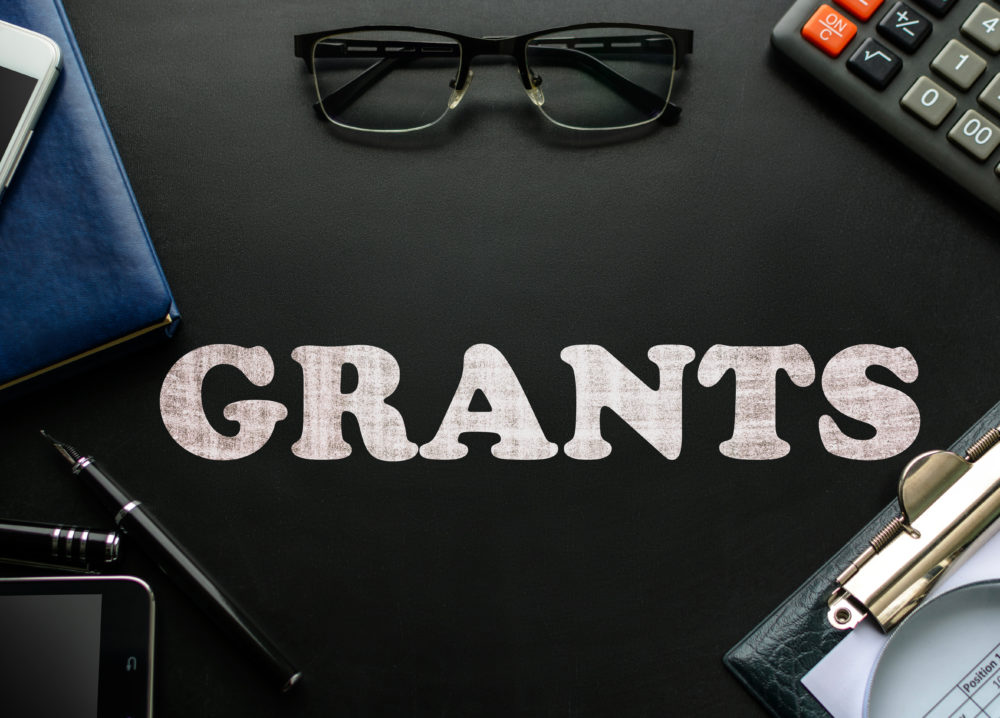UPDATED: The government has extended the Self-Employment Income Support Scheme so that those who have already claimed can make a second and final claim for up to £6,570.
This grant will be issued in August and will be worth 70 per cent of the average monthly trading profits for the business. It’ll be paid out in a single instalment covering three months’ worth of profits.
The self-employed claimed £340m within the first four hours of the government’s new Self-Employment Income Support Scheme opening, says HMRC.
Interviewed by Sky News, HMRC chief executive Jim Harra said that a total of 110,000 people had submitted claims worth an average of £3,090 by midday on Wednesday, May 13.
HMRC opened its Self-Employed Income Scheme for applications yesterday here.
HMRC believes that around 3.5m self-employed people could be eligible for the cash grant worth up to £7,500 and has contacted all of them, inviting them to claim their grant on a specified date between May 13 and 18 — although they can also make claims at a later date.
Those eligible should have received a letter, email or text message from HMRC with information about how to make an online claim now that the SEISS has opened. Money should hit bank accounts by May 35 or six working days after a claim is made.
The Self-Employment Income Support Scheme will offer a taxable grant of up to 80 per cent of a self-employed person’s income based on their taxable profits over the past three years, capped at £7,500 over a three-month period.
And the Self-Employment Income Support Scheme (SEISS) will only cover those who paid tax on trading profits of up to £50,000 of income in 2018-19.
The Treasury estimates that just over half of the roughly 6m self-employed will benefit from the Self-Employment Income Support Scheme, which it estimates will cost £9bn in its first three months.
Chancellor Rishi Sunak claimed the Self-Employment Income Support Scheme, which will cover up to 95 per cent of people who receive the majority of their income from self-employment, is “one of the most generous in the world”.
Sunak said: “I’m proud of what we’ve done so far, but I know that many self-employed people are deeply anxious about the support available for them … Despite these extraordinary steps, there will be challenging times ahead. We will not be able to protect every single job or save every single business.”
Self-Employment Income Support Scheme at a glance
- Same level of support as PAYE employees who face redundancy because of coronavirus
- Up to 80 per cent of typical earnings capped at £7,500 altogether. Income tax and national insurance still payable
- Open to anybody with income up to £50,000 according to their 2018-19 tax return
- Money paid by HMRC straight into your bank account – no need to contact taxman
- Available to people who make the majority of income from self-employment
- Only those who have – or are about to make a tax return for 2018-19 tax return – can apply
The coronavirus self-employed rescue package is based on Norway’s scheme, which pays self-employed people 80 per cent of their average earnings over the previous three-year period.
The self-employed make up 15 per cent of the UK workforce and represent a sector worth an estimated £305bn.
Britain’s self-employed are a disparate group. Analysis by the Institute for Fiscal Studies showed that about a third had taxable income of less than £10,000, while a small number of high-earning partners in professional firms rank among the UK’s top 1 per cent by income.
Emma Jones, founder small business support network, Enterprise Nation, said: “There will be some casualties. Those that are new to self-employment for example and those that have mortgages and bills to pay before June.”
>See also: How to get the government’s £10,000 cash grant for small businesses
What do I do now?
- Check your prior year tax returns to assess whether you are eligible on the majority trading and £50,000 trading profit conditions
- Get your tax return for 2018/19 filed if you have not yet done so (by 23 April 2020)
- Consider other help you may be eligible for as a self-employed worker
- If you haven’t heard from HMRC in the next few weeks and you believe you are eligible then do make your application to HMRC for the grant. HMRC will be checking your eligibility against its records and there will certainly be some who are in danger of falling through the cracks
Emma Beynon, a tax consultant at Kreston Reeves, said: “Remember, this is not tax-free income. The payments will form part of your trading profit for the year and be taxed along with the rest of your trading profits through your Self-Assessment Tax Returns.”
Check if you’re eligible to claim
You can use HMRC’s online tool to find out if you’re eligible to make a claim. Your accountant or tax agent can also use the online tool on your behalf.
You will need your:
- Self Assessment Unique Taxpayer Reference (UTR) number
- National Insurance number
How much Self-Employed Income Support will I get?
How much you’ll get
You’ll get a taxable grant based on your average trading profit over three tax years:
- 2016 to 2017
- 2017 to 2018
- 2018 to 2019
HMRC will calculate your average trading profit by adding together your total trading profits or losses for the three tax years, divided by three.
The grant will be 80 per cent of your average monthly trading profits, paid out in a single instalment covering three months, and capped at £7,500 altogether.
The grant amount we work out for you will be paid directly into your bank account, in one instalment.
Documents you will need to make a claim
You will need your:
- Self Assessment UTR
- National Insurance number
- Government Gateway user ID and password
- bank account number and sort code you want HMRC to pay the grant into (only provide bank account details where a Bacs payment can be accepted)
What if I’m a self-employed with my own company?
The Self-Employment Income support scheme does not cover the 1.8m who are owner-managers of their companies, paying themselves mostly through dividends.
Owner-directors typically structure their accounts so they receive around £800 per month via pay-as-you-earn (PAYE) but take the majority of their income as taxable dividends.
Treasury has suggested that owner-directors could apply to “furlough” 80 per cent of the PAYE element of their income via the Coronavirus Job Retention Scheme for salaried staff, while continuing to perform their legal obligations as company directors – as long as that is all they are doing.
For somebody earning £800 per month through PAYE, this would equate to a monthly income of £640.
The Institute of Directors says support should be extended to owner-directors as dividends provide a clear paper trail should be able to make a furlough claim of 80 per cent of their monthly income subject to tax, up to a £2,500 per month cap.
Tim Stovold, head of tax at accountants Moore Kingston, told the Financial Times that 400,000 paid themselves mostly dividends through personal service companies.
Brian Palmer, tax policy expert at the Association of Accounting Technicians, said: “There were also no crumbs of comfort for those who are self-employed from every perspective but provide their services through a limited company, many of whom draw a low salary and top up their income with dividends. They will not qualify as self-employed or for a significant payment from the Coronavirus Job Retention Scheme. Instead, they risk dropping through the cracks.”
Seb Maley, CEO of tax specialist for freelancers and contractors Qdos, added: “The chancellor may have delivered for millions of self-employed workers, but hundreds of thousands of genuinely self-employed individuals working through their own limited companies have been overlooked.
“Like employees, these people pay their tax, contribute billions to the economy and are helping the UK through this crisis. So it’s concerning that the Government has ignored them when it matters most.”
Beynon added: “Although taxpayers who trade through their own company may consider themselves self-employed, these measures do not extend to cover the shareholder directors of personal trading company. The Coronavirus Job Retention Scheme offers some cover to employees but directors are unlikely to benefit as they are central to the ongoing operation of the business.”
Treasury officials argue that is impossible to know whether the dividends came from the fruits of their work or from passive investments.
Also, the government believes that some self-employed contractors have been engaging in tax avoidance by setting up personal service companies and do not deserve support.
What if I have only just become self-employed?
The chancellor has said the rescue scheme will only be open only to those self-employed who have filed tax returns for the 2018-19 tax year, in order to minimise fraud.
At least 150,000 newly self-employed workers will be unable to make claims under the scheme because it is only open to people who filled in a tax return for 2018/19.
The Association of Independent Professionals and the Self-Employed have called for the scheme to be extended to those who file their first tax return soon after the end of the current tax year on April 6.
2m people left out of Self-Employment Income Support Scheme
An estimated 2m self-employed people are ineligible because they have trading profits above a cap of £50,000; draw less than half their income from self-employment; or have not been trading for long enough to have filed the tax returns on which grants are based.
Applying for Universal Credit in the meantime
The chancellor said that in the meantime self-employed workers can apply for Universal Credit, which has been temporarily increased to match levels of statutory sick pay (£94.25 a week) with the “minimum income floor” scrapped.
However those applying for Universal Credit for the first time will usually have to wait for five weeks to receive a pay cheque.
And any self-employed person with savings of £16,000 or more is not entitled to any support via Universal Credit so will have to wait until they have burned through their savings in order to qualify.
Prior to today’s announcement, the government pointed out that it had already strengthened “the safety-net for the self-employed” through delaying self-assessment tax payments due in July until January 2021.
Self-employed workers will also be able to claim business interruption loans worth up to £5m.
>See also: What coronavirus small business help is available for free?
Self-employed face tax hike
Rishi Sunak also hinted that the self-employed, who traditionally pay less tax than those under pay-as-you-earn (PAYE), will have to pay more tax once the crisis is averted.
The self-employed typically pay less in income tax and national insurance than PAYE employees because their bills are based on tax-deductible profits. According to the Resolution Foundation a self-employed worker on £25,000 pays £300 a year less in national insurance than an employee on the same salary.
Until now the tax system has recognised that the self-employed have no paid holidays or job security, and so pay less tax as a result.
Sunak said the “very significant tens of billions of pounds” being spent to treat self-employed people the same way as employed people during this time of crisis “throws into light that inconsistency and whether that is fair going forward when we’re all chipping in together to right this ship afterwards”.
Emma Jones, founder small business support network, Enterprise Nation, said the chancellor’s words were “a warning shot that this will give the government a very good reason to change employment law and implement something similar to IR35 and other tax measures with renewed vigour as the self-employed, on this occasion, have asked to be treated in the same way as employees. If this applies to tax, there will be more changes ahead for the self-employed down the line.”
Further reading
Government launches business Coronavirus Job Retention Scheme





